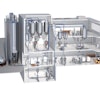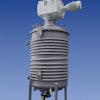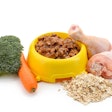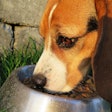
Utrecht University researchers analyzed 35 varieties of raw meat-based dog and cat foods from eight brands available on the Dutch pet food market. The scientists found bacteria and parasites, including Escherichia coli, Listeria and Toxoplasma, in several of the raw pet foods.
“The brands that we have tested are all products from small, local producers in the Netherlands and not for the export,” Paul Overgaauw, DVM, PhD, of Utrecht University in the Netherlands, told Petfood Industry. “But from earlier publications from the US and Canada, I'm convinced that you will find similar rates of contamination in other countries.”
The journal Veterinary Record published these study results:
Bacteria
- E. coli serotype O157:H7 - eight products (23 percent)
- Extended-spectrum beta-lactamases-producing E coli - 28 products (80 percent)
- Listeria monocytogenes - 19 products (54 percent),
- Other Listeria species - 15 products (43 percent)
- Salmonella species - seven products (20 percent)
Parasites
- Sarcocystis cruzi - four products (11 percent)
- S. tenella – four products (11 percent)
- Toxoplasma gondii - two products (6 percent)
Effects of pathogens in raw pet food
“The riskiest bacteria for dogs and cats are Salmonella spp. that can cause gastroenteritis and even septicemic disease,” Overgaauw said. “For example, one publication reported fatal septicemic salmonellosis after feeding raw meat to two cats. Contaminated raw meat products with Salmonella have also been identified as a source of gastroenteritis in adult dogs and of diarrhea in young puppies.
“Although both cats and dogs can become infected with the found bacteria, illness rarely occurs, and most of them are asymptomatic carriers that shed these bacteria in their feces,” he said.
When those microorganisms are released in the pets’ feces, they can spread to the humans who clean up after them or share living spaces. That means the pathogens in raw pet food are zoonotic, meaning they can spread from animals to humans.
The increasing humanization of pets results in greater risks from zoonotic disease, as dogs and cats now share more human living, eating and sleeping spaces than when cats stayed in the barn and dogs in the yard.
“It is not difficult to imagine how eventual transmission will take place,” he said. “The percentage of owners that sleep with their pets as well as allowing licking their face are very high.”
Avoiding problems with pathogens in raw pet food
When producing raw meat-based pet food, manufacturers can reduce the risk of bacterial contamination by maintaining clean production processes, Overgaauw said. However, the origin of the ingredients can be a food safety challenge, especially if offal, organs, bones and different species are mixed together. Preparing raw pet food at low-temperatures is also important, as this can help inactivate parasites in the meat.



















